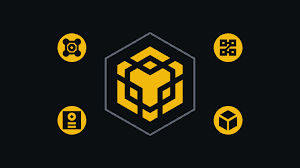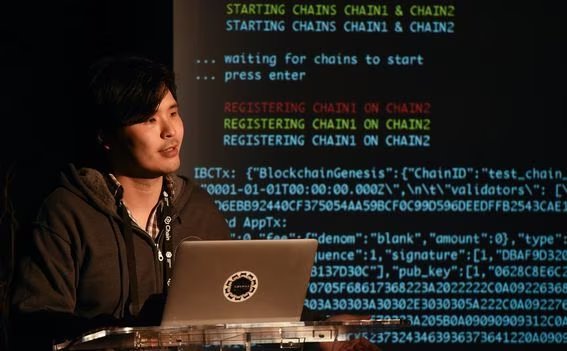TL;DR: With a new update or project being released almost every day, it’s clear the crypto ecosystem is constantly evolving. Ethereum has gone through a lot of ups and downs to reach the level it’s at today — but it’s just the beginning. Knowing what brought it here and why it was created will lead you to make better decisions when investing or simply using Ethereum.
In this article, we’re gonna dive into the Ethereum ecosystem, answer all the $ETH related questions and even more. Prepare yourself for a history lesson and a journey to the future of Ethereum!
What is Ethereum (ETH)?
Ethereum is a Layer 1 blockchain created in 2014 by Vitalik Buterin. It is a smart contract platform that is shifting towards implementing scalability to its protocol.
Scalability is defined as the amount of transactions that Ethereum can process per second, or throughput. Ethereum currently processes about 17 transactions per second. This is because Ethereum chose to prioritize decentralization and security over scalability.
Research has led to the conclusion that every blockchain has to make a tradeoff between decentralization, security and scalability. This problem has been coined as the “blockchain trilemma.” Each blockchain that has emerged since then had its architecture influenced more or less by the blockchain trilemma.
Some networks traded decentralization to achieve security and scalability, while others traded security to achieve decentralization and scalability. Ethereum chose to trade scalability for decentralization and security.
Every blockchain strives to incorporate all these three aspects into its design. Ethereum was the first network to tackle scaling from a multi faceted perspective. Led by Vitalik, the research team has come up with two general ways of scaling: on-chain and off-chain.
On-chain scaling keeps all the transactions at the base Ethereum chain. The approach is to increase the throughput of the base chain itself. It is generally considered that on-chain scaling provides better security guarantees because. This is because security measures are implemented on one layer, removing complexity along the way.
The most popular on-chain scaling technique is called sharding, which is seen as still at an experimental phase.
The concept of sharding has been first introduced by Ethereum in 2015. Sharding is a process in which the whole blockchain is split into smaller blockchains aka shards. Because each shard contains its own data, it makes it unique and independent from other shards. As a result, each shard can separately process more data.
Using this innovative method, blockchains can process exponentially more transactions without compromising data availability. Recently, more projects have focused their attention on sharding, each with its own implementation.
By contrast, off-chain scaling separates the computational layer from the base layer. Put simply, transactions are processed off-chain and the proof is posted on the main chain. Layer 2 or off-chain scaling solutions are broadly divided into: State Channels, and Sidechains.
Ethereum is the only chain benefitting from both types of scaling. Sharding is currently being implemented by the Ethereum Foundation. Until sharding is fully implemented, projects such as Optimism, Arbitrum, Polygon and StarkNet took on the challenge of implementing off-chain solutions. As a result, Ethereum is scalable in the short-term, and ultra-scalable in the long-term.
Back in 2014, Ethereum introduced the concepts of smart contracts. These are small applications that run inside a virtual machine called the Ethereum Virtual Machine. The EVM allows for a blockchain to process more than simple token transfers. To give more info, it opened up the possibility to run applications in a decentralized manner.
Applications usually run in the cloud or on your computer, so running them on a blockchain was unheard of at the time. This makes them uncensorable (nobody can stop them) and ensures they’re always online — as long as the chain they run on is processing transactions.
The consensus mechanism that Ethereum uses is called Proof of Stake, meaning that Ethereum gets its security from validators that stake $ETH to secure the chain. Proof of Stake is different from Proof of Work blockchains, where miners replace the role of validators. Using this novel approach, PoS chains can remain decentralized and replace the energy intensive process of mining blocks using PoW.
The concept of blockchains is not new, and Ethereum is one of many such networks. The idea started in 2008 with the release of Satoshi Nakamoto’s Bitcoin Whitepaper. This kicked off the subsequent creation of many different types of networks under the same “blockchain” terminology. Despite being similar in concept blockchains have all different architectures and use cases. What all have in common — including Ethereum — is that they have to be secure.
Security is the ability of a blockchain to prevent attacks and penalize malicious actors. This is usually done through their consensus algorithm and the mechanism they use to reach finality.
Finality is achieved when a block has been created and is now immutable, meaning that nobody can change the date inside. Over time many different mechanism have been designed, ranging from Proof of Work, Proof of Stake to novel ones called Proof of Spacetime. Each one hopes to achieve the best way of securing the network they are built for.
As noted before, Ethereum makes use of type of consensus mechanism we call “Proof of Stake” — or PoS for short.
Ethereum is powered by the ETH token, a central part of the Ethereum ecosystem. At its core, ETH is an inflationary token due to the way its tokenomics have been planned. This means that new ETH coins are created with each block and the supply expands indefinitely. However, Ethereum went through a series of changes meant to address its inflation. Ethereum has no maximum amount of tokens that can be created. So, how it possible for ETH to become deflationary?
In 2021, Ethereum has announced the release of EIP-1559. The upgrade implements a transaction pricing mechanism that includes fixed-per-block network fee that is burned and dynamically expands/contracts block sizes to deal with network congestion. If more is burned on base fee than is generated in mining rewards then ETH will be deflationary and if more is generated in mining rewards than is burned then ETH will be inflationary.
The Ethereum inflation rate sits currently at around 0.7% and it fluctuates depending on the network usage. The network had days of negative issuance, meaning the tokens burned exceeded the new tokens in circulation. In the long run, researchers predict that Ethereum will become net deflationary because of its expanding demand.
For more details about how you can earn more Ethereum by running a validator node at home check out our Ethereum Mining & Staking guide. It includes the exact steps and best methods of earning more crypto like $ETH in 2024 and beyond.
When was Ethereum (ETH) created?
Ethereum (ETH) was created after Vitalik Buterin teamed up with an group of early crypto contributors.
Work began on the Ethereum chain in 2014, but before that, a couple of important events happened. Most events revolve around the Ethereum Founder, Vitalik Buterin.
The first meaningful event is the creation of Bitcoin Magazine. Co-founded in 2011, by Vitalik Buterin and four others, Bitcoin Magazine is one of the original news and print magazine covering Bitcoin and cryptocurrencies.
Back in 2011, Vitalik had just stumbled upon Bitcoin and was instantly hooked. Like most people who joined the space, Vitalik wanted to mine bitcoin and experiment firsthand with the technology. But he had neither cash to buy a mining rig, nor the computing power necessary to mine using his laptop. Instead, he searched for online forums until he found someone willing to pay him in bitcoin for contributing to a blog. Vitalik’s pay was 5 BTC per blog.
Buterin’s articles caught the attention of Mihai Alisie, a Romanian Bitcoin enthusiast. The two began corresponding and eventually, in late 2011, they co-founded Bitcoin Magazine. Vitalik’s world at the time was split between writing at Bitcoin Magazine, taking five advanced courses at the University of Waterloo, and holding down another part-time job as a research assistant for the cryptographer Ian Goldberg, who in 2004 co-built the Off-the-Record Messaging protocol.
Writing alone in his bedroom, Vitalik established himself as an indispensable voice of authority for explaining and expanding the technicalities of Bitcoin in an easy to understand manner. Despite experiencing a life of solitude in his young age, Vitalik forged friendships with people all over the world. Many of the high profile individuals from the crypto space were reading his blog posts, as they were offering deep insights about cryptography and economics.
In May of 2013, Buterin made a trip to San Jose, California for a conference that would change everything. Bitcoiners had flown in from all around the world for the event. Veterans of the Dotcom era were comparing the course of crypto to the dawn of the internet. Booths were showcasing their hardware wallets and ATMs. And Vitalik witnessed all as the representative of the Bitcoin Magazine. The San Jose event was Vitalik’s first glimpse of a living and breathing community rallied around the crypto economy.
His normal life obligations were weighing down on him. Vitalik felt he had to choose between pursuing his college studies or jump into the crypto space full-time. Luckily for us, he chose the latter. As Vitalik recalls, the San Jose experience gave him confidence that the crypto space is real and it’s worth taking a chance. At the end of the semester, he dropped out of college and started looking for ways he could contribute more substantially to the crypto space.
For six months in 2013 he traveled around the world to Israel, London, Los Angeles, San Francisco, Amsterdam, and Las Vegas, visiting the people who were trying to stretch a more powerful version of Bitcoin, all the while burning through the bag of bitcoins he had amassed as a freelance blogger, which by this point had significantly appreciated in value. When he returned home to Toronto, Buterin was convinced that everyone was going about “blockchain 2.0” the wrong way.
Another meaningful event was the release of the Ethereum whitepaper in 2013. Titled: “Ethereum: A NEXT GENERATION SMART CONTRACT & DECENTRALIZED APPLICATION PLATFORM,” the 36-long paper ignited a new wave of innovation in the crypto industry.
At that time, Proof of Work was the standard consensus method of blockchains, but Vitalik envisioned something better. Driven by a lack of applicability beyond monetary network, he was looking to create a protocol that could enable the creation of decentralized applications.
This is how Ethereum and the Solidity smart contracts were born. What the Ethereum team created can be categorized as a smart contract platform. This is due to its internal mechanics, implementing a specialized programming language for writing smart contracts, called Solidity.
Until that point, blockchains were forks of the Bitcoin protocol. An important difference is that Ethereum was initially based on Proof of Work, same as classical consensus, but enabled anyone to write smart contracts where they can create their own arbitrary rules for ownership.
Vitalik Buterin showcased his idea to 15 of his friends. The technology he was describing was very ambiguous. Most people were still grasping Bitcoin’s mission of enabling unstoppable, unmediated digital payments. Ethereum was about applying these principles to create autonomous software.
Buterin expected the negative reviews to roll in, highlighting critical flaws, but it never happened. As it turned out, the core Ethereum idea was good, fundamentally, completely, sound. A couple months later, Vitalik presented Ethereum on the stage at a Bitcoin event and the audience rewarded him with a lengthy standing ovation.
In the months that followed, Vitalik had put together a team that would bring Ethereum to life. The group of founders launched the $ETH token and decided to fundraise through a crowdsale. They raised more than 31,000 BTC from the crypto community and used the money to establish a non-profit organization in Switzerland, called the Ethereum Foundation.
Bitcoin was trading at $650 at the time, which amounted to roughly $18.4 million raised. Due to bad timing and a mismanagement of the funds, the price of Bitcoin crashed leading to millions of dollars in losses for the newly created Ethereum Foundation. Luckily, the team still had more than enough to carry on their task of building the world’s first smart contract blockchain.
Who created Ethereum (ETH)?
Ethereum was created by Vitalik Buterin together with Gavin Wood and 6 other co-founders. The project has an unusual long list of founders. In hindsight, only a few members were responsible for the majority of the technological contributions. The rest were involved in managing the Ethereum Foundation operations. In his interviews, Vitalik admitted there didn’t need to be so many co-founders, but at the time, they weren’t sure whether Ethereum would succeed.
Vitalik Buterin was born in Moscow and stayed there until he was six, at which point his parents moved to Canada in search of a better opportunity. Since he was young, Vitalik showed signs of higher than average intelligence. In third grade, he was placed in program for the gifted, where he began to realize that his particular talents.
He had a natural proclivity for math and programming, an early interest in economics, and an ability to add three digit numbers in his head twice as fast as the average human being. Buterin then attended The Abelard School, a private high school in Toronto. At the age of 17, he learned about Bitcoin from his father, who had a small software startup of his own. He was dismissive about the idea in the beginning, but his interest rekindled later on.
According to his story, he played World of Warcraft from 2007 to 2010 but decided to quit after Blizzard nerfed his "beloved warlock's Siphon Life spell.” He was profoundly shocked by the “horrors centralized services can bring” and decided to quit.
In 2011, searching for a new purpose in life he decided to give Bitcoin a chance. At first, he was skeptical, and did not understand how it could possibly have value without physical backing. But slowly, he became more interested. He started writing a blog called Bitcoin Weekly at a meek wage of $1.5 an hour, paid in BTC.
In 2011 he co-founded the Bitcoin Magazine and went on to travel the world, attending conferences while studying at the University of Waterloo. Upon extended talks with people, it was clear that a new movement was brewing inside the crypto community. It was described as blockchain 2.0, but people were still putting the pieces together. Upon his return to Toronto, he dropped out of college and published the whitepaper for Ethereum.
His efforts were aided with a $100K grant from the Thiel Fellowship, a scholarship created by venture capitalist Peter Thiel and went to work on Ethereum full-time. In his quest to code Ethereum, Vitalik was aided by the project’s future co-founders.
The second-biggest contributor to the Ethereum codebase was Gavin Wood.
Gavin Wood is a computer scientist born in Lancaster, England. He worked as the CTO of Ethereum and now serves as the chairman of Parity Technologies.
Gavin’s connection with tech started at 9 years old when his mother gifted him a computer. His neighbor taught him how to program, and since then Gavin’s interest in programming has started. Gavin Wood studied at the University of York between 1998 and 2002, where he graduated with a Master Computer Systems and Software Engineering. In the following years, he completed his PhD entitled "Content-based visualization to aid common navigation of musical audio" in 2005 at the same university.
Gavin Wood started his career working as a programmer at several firms. Over time, he advanced from a simple developer to the CTO position at 0xLegal, a startup that wrote software allowing improved drafting of legal agreements in Microsoft Word.
In addition to programming, Gavin has long been interested in economics and game theory. He has developed a strategy board game called Milton Keynes and created the Fractal Playground and Localized Proportional Representation voting system. He also proposed a new voting system for the Supreme Court of the United Kingdom, but in the end, they did not want to change the voting system.
His first contact with crypto was in 2011, after hearing about Bitcoin. Two years later, he revised the whitepaper again and began to realize new possibilities between fields of programming and game theory. His thoughts on governance also influenced Polkadot’s design ideas.
One of his most important projects was Ethereum. In 2013, Gavin met Vitalik Buterin through an old friend. After listening to Vitalik’s ideas on Ethereum, he decided to help Vitalik write the code for the project. In 2014, Gavin went to Miami and founded Ethereum with Vitalik and 6 other co-founders.
At the condo in Miami, Gavin developed the first operational Ethereum implementation, generally referred to as the Ethereum “Proof of Concept 1” or Alpha version. After that, Gavin acted as the first CTO of Ethereum and wrote the “Ethereum Yellow Paper," in which the Ethereum Virtual Machine (EVM) was defined. This was the first official specification of the blockchain state machine.
In the next two years, Gavin was the lead developer of Ethereum — he designed the general platform architecture, the majority of the C++ Ethereum client, and the initial design of Solidity, which is the language Ethereum smart contracts are coded in. Thanks to Gavin’s capabilities, Ethereum went live on July 30, 2015.
In 2016, Gavin left Ethereum and founded EthCore. He gradually gathered more than 60 developers from 15 countries, and EthCore later become Parity Technologies, which wrote the Ethereum Parity client in Rust, a far more powerful language than Geth and C++ clients.
To this day, nobody knows why Gavin Wood left Ethereum. Some speculate that Gavin and Vitalik had divergent views on the development path of Ethereum. In some interviews, Gavin mentioned that he disagreed with Vitalik on governance aspects, and he thought that the fact that ETH is the only allowed gas token has made Ethereum deviate from becoming a free competition decentralized platform.
Back when the team was assembled, the expectations were small. They were a bunch of people with great ideas and grand ambition, packed in a Miami condo. As it turns out, having a bunch of ultra intelligent geeks put together in the same house leads to fights. The central point of dispute was whether to make Ethereum Foundation a for-profit or a non-profit entity. The dispute led to many of the Ethereum’s initial co-founders depart shortly after the project launched.
In his journey, Vitalik co-opted Mihai Alisie, Anthony Di Iorio, Amir Chetrit, Charles Hoskinson, Jeffrey Wilcke, and Joseph Lubin. Except for Joseph Lubin and Jeffrey Wilcke, the rest of the co-founders moved on from Ethereum during or shortly after its inception.
How is the Ethereum (ETH) token used?
The ether token is the native token for the Ethereum network. Most assets in the Ethereum ecosystem are denominated in ETH, which makes it the default unit of account.
ETH is the fuel that powers transactions and block creation on the Ethereum chain We sometimes refer to it as “gas.” Its primary use case is securing the network and keeping actors aligned to the same principles.
Making a transaction on the Ethereum network requires a fee in ETH that can fluctuate from a couple dollars to triple digits. Because Ethereum is the most utilized network in the crypto space fees quickly add up. This fee is paid by users and goes to validators for doing their work.
ETH is accepted as a payment method for a wide range of goods and services. It started with payment giants like Visa and Mastercard integrating ETH payments, and extended to famous brands and artists accepting payments in ETH. Payment apps will usually convert the ETH balance into fiat when making a transaction. This is due to the volatility of the asset.
Ethereum is currently listed on multiple exchanges. The major ones are Binance, Coinbase and Kraken.
If you want to skip ahead and learn how to earn more Ethereum by running a validator node at home check out our Ethereum Mining & Staking guide. It includes the exact steps and best methods of earning more crypto like $ETH in 2022 and beyond.
Who is developing Ethereum (ETH) now?
Development on Ethereum started in 2014 by a team who later spun out into Ethereum Foundation.
After validating their idea, Vitalik Buterin and his team established Ethereum Foundation as a non-profit company with their headquarters in Zug, Switzerland. The foundation handles the development of the Ethereum (ETH) blockchain and protocol. Besides handling the development of the core protocol, it is also tasked with offering a variety of funding grants for projects working to promote the success and growth of the Ethereum ecosystem.
Parts of the codebase was written by external developers, making open source contributors an essential part of advancing Ethereum. Open source contributors can work on an issue that’s already been identified, or build infrastructure services on top of the network. Despite being the second-largest network, Ethereum still has a long way to go.
Currently, their GitHub lists more than 860 open source contributors to the Ethereum codebase. The go-ethereum version has been forked more than 15K times. This is because Ethereum serves at the base of many popular EVM-compatible blockchains.
Like any successful blockchain network, it was essential that Ethereum amasses a strong community of builders that can maintain the network. To attract talent, Ethereum Foundation started offering grants.
As of 2022, EF holds a consistent treasury worth $1.3 billion ETH and $300M in non-crypto investments. Suffice to say, funding is the last problem for an entity like the EF. It should come to no surprise that EF committed 39,168 ether to client teams building on its network. Last year alone, EF spent in excess of $48 million on various teams, funding and bounties. Ethereum developers, agencies, and teams involved in the foundation’s activities pocketed a cumulative $5.1 million in 2021.
Managing such a sizable treasury is challenging, but finding the right projects to invest in takes even more effort. Thousands of projects are already building on Ethereum, but only a few shine out. While the EF staff have an idea about the areas where developers need to focus on, truth is that there are way too many startups than they can handle.
Recently, Ethereum introduced quadratic funding, an innovative way to support Ethereum projects based on a mathematical formula. The wider concept is related to the public goods funding, an initiative on which Vitalik is deeply involved in. Basically, internet apps such as are such an important part of our lives that they should be treated as public goods. How do we know if an app should be considered a public good? Imagine your life without apps like Twitter, Reddit, or Google. Exactly!
In the real world, public goods are funded by taxes. In the digital plane, however, there is no universal tax to maintain social apps and so on. The apps we use the most usually went through years of work before achieving self-sustainability. Quadratic funding strives to do help essential apps deliver their continued service to the public.
As mentioned previously, the secret behind Quadratic Funding is math. A matching pool is raised, and then a crowdfund campaign is matched according to the QF algorithm. What matters most is the number of contributors rather than the amount funded. This pushes power to the edges, away from whales & other central power brokers. The end result is more democracy in public goods funding decisions. Since its inception, more than $21 million has been funded towards public goods.
Besides EF grants, ConsenSys also stepped in by offering funding to Ethereum infrastructure projects. ConsenSys is the leading Ethereum software company. They are responsible for creating some of the most popular infrastructure services such as MetaMask, Infura, Truffle and Codefi.
Two years into the protocol’s development, it became clear that Ethereum was taking over the smart contract scene. Its utility attracted the interest of existing crypto projects and financial institutions who were looking to create their own blockchain. In 2017, a mix of both entities decided to launch Ethereum Enterprise Alliance.
The primary objective of the EEA is to turn Ethereum into an enterprise-grade technology that its members and other companies can use. The businesses can benefit from the transaction times and volumes that can be processed using blockchain technology, as well as other blockchain applications available through Ethereum.
Ethereum’s use at the enterprise level is somewhat siloed from the rest of the crypto ecosystem. This is because enterprise blockchains are permissioned in nature. Maintaining compatibility with Ethereum can help bridge the gap between CeFi and DeFi, as many predicted it would happen.
Governance of the Ethereum protocol is done off-chain. This means that the community votes on the protocol upgrades, but the actual code implementation is done by the Ethereum Foundation.
Not only token holders, but anyone, has a say in the direction of the protocol via Ethereum Improvement Proposals EIPs. In the realm of EIPs, anything is subject to change. From core protocol specifications, to client APIs, and contract standards. So far, the Ethereum community has voted on more than 100 proposals, with a lot more on the way.
What are the latest updates on Ethereum (ETH)?
Ethereum in 2019
In 2019 Ethereum was still working on its long-awaited transition to Proof of Stake. Back in 2015, when Ethereum launched, Vitalik envisioned the transition to PoS would take a couple months to happen. To everyone’s disappointment, switching to PoS proved to be a much more difficult task that required plenty of coordination and preparation.
As part of the preparation, Ethereum had 2 major upgrades: Constantinople and Istanbul.
The Constantinople upgrade is a hard fork that integrated 5 Ethereum Improvement Proposals (EIPs), which tackle a number of cost, speed, functionality, and miner issues. EIP-1234 was one of the most highly discussed upgrade. It is composed of two components: Block Reward Reduction and Difficulty Bomb Delay.
In 2019, miners were receiving 3 ETH per block as a reward. After the Constantinople hard fork, miners received 2 ETH per block. This reduction from 3 ETH to 2 ETH is known as the “Thirdening.” This is the second time in Ethereum’s history when block rewards have been reduced. The Byzantium hard fork in late 2017 reduced the rewards from 5 ETH to 3 ETH.
The second component is the Difficulty Bomb, a mechanism that, if activated, would increase the energy required to mine a new block until it becomes impossible to mine new blocks. At this point, the Ethereum network would become “frozen.” EIP-1234 delays the implementation of the Difficulty Bomb for another twelve months, at which point it will be voted upon again.
The Difficulty Bomb was originally included in the network in September 2015. Its purpose is to support the transition away from PoW towards PoS. When PoS is implemented, miners could theoretically choose to support the old PoW chain, thus causing the creation of two separate chains — one maintained by stakers and one maintained by miners.
The solution for this not to happen is to implement the Difficulty Bomb, which would eventually phase out the efficacy of mining and allow for the complete transition of the network over to PoS without the threat of a contentious hard fork.
The 8th Ethereum hard fork, called Istanbul, was set to happen on December 6. The Istanbul upgrade incorporated 6 EIPs, which prevent spamming blocks and improve overall denial-of-service attack resilience. In addition, Istanbul will enable greater Ethereum and Zcash interoperability.
At the end of the year, the first phase of Ethereum 2.0 (called Serenity) saw the rollout of the Beacon Chain (not to be confused with bacon). The Beacon Chain is a Proof of Stake blockchain that will run alongside the original Ethereum PoW chain, ensuring there is no break in the continuity of the chains.
Ethereum in 2020
In 2020, Ethereum was getting closer towards the implementation of PoS consensus. With the Beacon Chain running, the team moved on to Serenity Phase 1, which will address finality and consensus on shard chains.
Shard chains are a core feature to future scalability on the Ethereum network. Sharding splits the data processing responsibility among many nodes, allowing parallel transaction, storing, and processing of information. This is in opposition to the existing Ethereum mainchain, which requires each full node to process & validate each transaction.
The shard chains in Serenity’s Phase 1 will serve as a “test run” for shard chains. The Beacon Chain will monitor the execution of these shard chains. A validator will stake 32 ETH and be randomly assigned to serve as a validator on a specific shard chain. According to the Ethereum 2.0 specs, the Beacon Chain will support 1024 shard chains, each of which will be validated by a collection of 128 nodes.
In Phase 2, the functionality of Ethereum 2.0 comes together. With the introduction of a new Virtual Machine — Ethereum-flavored Web Assembly (eWASM) — shard chains evolve from fairly rudimentary data markers to fully functional transactional chains, capable of scaling the Ethereum network. With the switch to Ethereum 2.0 and the Beacon Chain, the network’s virtual machine will be upgraded to eWASM, a virtual machine based off Web Assembly.
While the Ethereum researchers were laser focused on Ethereum’s transition to Proof of Stake, a seemingly small group of dapps in the ecosystem began to capture people’s attention (and capital). We’re talking about the meteoric rise of DeFi. In the midst of the pandemic, a small group of Dapps were showcasing the power of decentralized finance.
In the span of a 6 months, DeFi flourished from a handful of protocols to dozens. This was a tremendous period for innovating the crypto sector, with Automated Market Makers and decentralized derivatives protocols launching one after another. The crypto community was animated by the idea of earning triple digits APYs for providing liquidity, with new protocols advertising juicy rates.
Like all good things come to an end, DeFi summer reached its peak, and then dropped massively. One of the reasons behind the fall was the fact that protocols offered unsustainable yields, generated by minting tokens. Early participants reaped the most benefits, while those who came late bought into the dump.
Despite the liquidity farms, pumps and dumps, outrageous marketing, DeFi had gifted some of the most valuable protocols on Ethereum. Protocols such as Uniswap, Aave, Curve, Compound, and Balancer, are being regarded as some of the most durable, trustworthy DeFi protocols in the entire industry.
By the end of the year, Ethereum had 2800+ dapps, 50K daily active users, and more than $2B in total locked value across DeFi protocols.
Ethereum in 2021
2021 was Ethereum’s best year to date, reaching an all time high of $4,891. This was heavily influenced by a few key events and updates.
The most influential factor was the implementation of EIP-1559, an upgrade designed to make transactions on Ethereum more efficient. The upgrade was part of the London hard fork, and proposed a fee structure priced automatically by the network. On top of that, a tip system would be introduced to allow people who want their transactions verified faster, to pay a miner to do so.
While proposal EIP-1559 is designed to help reduce transaction costs, its design has also been dubbed “Ethereum’s scarcity engine.” That’s because the base transaction fee that a user pays to transact, instead of going to a miner, is effectively sent to the network and “burnt” reducing the amount of supply.
The improvement proposal has been met by resistance from some mining pools. Players such as Sparkpool, the largest mining pool, followed by Ethermine and Flexpool launched a marketing campaign against EIP-1559. Put together, more than 50% of Ethereum’s current total hashrate opposed to the movement.
From the outside, miners were already threatened by Ethereum’s transition to Proof of Stake. Its transition would make their mining equipment useless. And taking away their monopoly over the network fees was another slap in the face. Out of the previous year, the real winners of DeFi summer were the miners. That’s because users were willing to outbid each other in order to front run trades. Losing a substantial source of revenue didn’t sit well with the profit margins of mining giants.
EIP-1559 went live on August 5, 2021, as part of the London hard fork amidst fanfare, and none of the presumed fears happened. There was no contentious hard fork from the miners, and the system worked smoothly. By the end of the year, EIP-1559 burned $100M in fees.
Another important event was NFTs going mainstream. The craze was ignited by Beeple’s “Everydays: The First 5000 Days” being sold as an NFT in March. The artwork is made out of 5000 pieces put together in one giant picture, and was sold for $69.34 million. Shortly after, Christie’s became the first major auction house to sell a fully digital, NFT-based piece of artwork. Also for the first time, Christie’s started accepting payments in crypto.
Few months later, Bored Apes was launched, and the NFT space caught fire. People were selling pfps of monkeys left and right. Prices skyrocketed to 60+ ETH per Bored Ape. Celebrities and influencers caught wind of the NFT trend and joined with their own collection. In retrospect, the NFT mania was plagued with scams. Only this times, the investors were left with a nice jpg instead of worthless tokens. On the good side, NFTs were instrumental in bringing people closer to crypto. Many have learned to set up their wallet, who to (or not to) manage their keys, and chose to stay in the space.
Overall, the year 2021 was bullish for the entire industry, especially Ethereum. After the London hard fork, all eyes were set on Ethereum’s Merge event.
Ethereum in 2022
The current year has been a powerful one for Ethereum. With the release of ETH 2.0, the network completed a historic moment in its existence. 7 years after it has been conceptualized, Ethereum finally transitioned to Proof of Stake on September 15.
Under the new consensus, people can become validators by staking 32 ETH and running their own node. The switch from Proof of Work to Proof of Stake reduced Ethereum’s energy consumption by 99%, putting a damp on people’s criticism about the network’s carbon footprint.
Everyone celebrated the merge, except for the miners. In a desperate attempt to milk more money, major Ethereum miners have created their own hard fork that still used Proof of Work. Doing a hard fork implied duplicating every existent balance on Ethereum to the new chain. Except that miners assigned the ETH from Ethereum Foundation to themselves. It was a blatant cash grab that immediately became irrelevant.
With Ethereum PoS going live, people flocked to staking protocols to lock their ETH in exchange for a 4% estimated APY. Locking up 32 ETH to run a full node was unaffordable for most people. In order to get a share of the rewards, users have flocked to exchanges and staking protocols. By delegating their tokens to a larger pool, users could split the rewards with others. The massive exodus to staking left more than 64% of the ETH being staked with 5 entities. Concerns have arised among the community members, as Ethereum was at risk of censorship.
Fears of censorship around Ethereum network started to arise as the Office of Foreign Assets Control (OFAC) started imposing sanctions on the blockchain transactions. As it turned out, more than 51% of the Ethereum blocks are OFAC-compliant, meaning they will censor transactions involving sanctioned entities. In reality, sanctioned actors can still conduct transfers on the Ethereum network, the only difference being a few more minutes of waiting time.
Now that Ethereum PoS is working flawlessly, Vitalik has released a new roadmap for Ethereum. The updated technical roadmap now inserts the Surge, the Verge, the Purge and the Splurge. According to the Ethereum roadmap, the goal of the Scourge is to “ensure reliable and credibly neutral transaction inclusion and to avoid centralization and other protocol risks from MEV.” While the full details for each phase haven’t yet been disclosed, Vitalik said that EF is working to implement each of these sections in parallel.
Ethereum is in a constant growth cycle, and network participants like us can earn more $ETH without too much hassle or technical knowledge, right from the comfort of our homes.
Learn how to do that in our Ethereum Mining & Staking guide, which includes the exact steps and best methods of earning more crypto like $ETH in 2022 and beyond.



































































